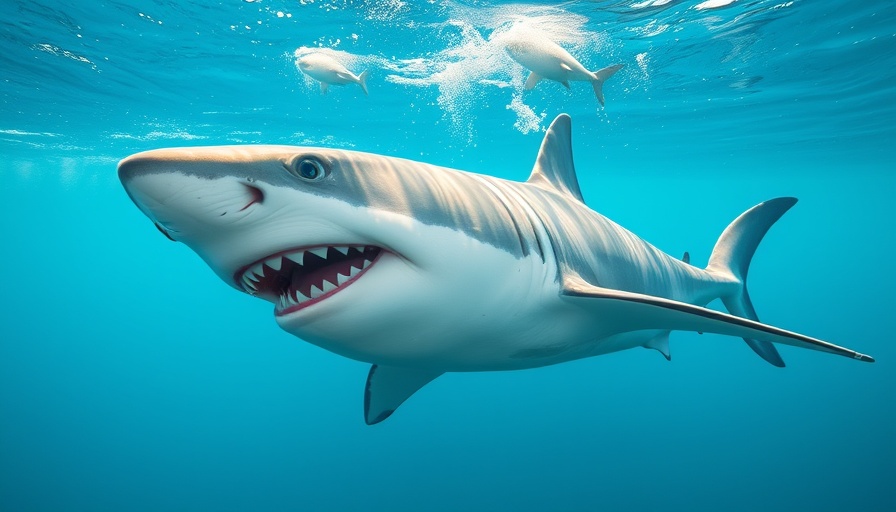
Sharks Thriving in Estuaries: A Sign of Change
As temperatures rise in the Gulf of Mexico, a fascinating trend is emerging along the shores of Texas and Alabama: baby bull sharks are thriving in the estuarine waters. Known for their stout bodies and robust nature, these juvenile sharks are making their presence known in places where their existence marks a significant ecological shift.
The Bull Shark’s Unique Habitat Preferences
Unlike many species of sharks that remain firmly in saltwater, baby bull sharks exhibit a unique adaptation—they venture into freshwater rivers and estuaries. Over the past two decades, scientists have documented a fivefold increase in these young sharks in Mobile Bay, Alabama, along with notable rises in Texas estuaries like Galveston Bay and Sabine Lake. This growth reflects how bull sharks have evolved their biology to thrive in varying salinities, allowing them to use these freshwater environments as nurseries.
Understanding the Ecological Impact
The presence of bull sharks in these estuaries contributes positively to the local ecosystems. As they move between freshwater and salty marine environments, they act as conduits linking these two critical habitats. Through their feeding and resting habits, they contribute nutrients to both systems, enhancing overall ecological stability. This interaction helps bolster the resilience of these environments against disturbances, turning them into dynamic food webs.
Concerning Myths About Bull Shark Attacks
Despite their fierce reputation, it's important to understand that juvenile bull sharks do not pose a significant threat to humans. Adult bull sharks are responsible for a few unprovoked attacks each year, yet statistics show that in Texas and Alabama combined, there were minimal reported shark bites between 2012 and 2023, none of which were fatal. In fact, you are statistically more likely to encounter danger from more common creatures like bees.
Current Trends in Marine Ecosystems
The rise of juvenile bull sharks is not merely a curiosity; it is reflective of broader environmental changes. As the Gulf of Mexico warms, understanding how species like the bull shark adapt can provide crucial insights into marine ecosystems and their health. This trend serves as a vital reminder of the interconnectedness of our ecological systems and the ongoing impact of climate change.
What This Means for Beachgoers and Boaters
The increased presence of juvenile bull sharks in local waters brings excitement but also brings food for thought for beachgoers and recreational boaters. While these sharks are not a cause for alarm, it’s essential for those enjoying the estuaries to remain informed and respectful of their surrounding wildlife. Following basic safety guidelines in the water can enhance the experience while fostering a safe coexistence with these magnificent creatures.
Take Action: Become An Advocate for Shark Preservation
Knowing the vital role bull sharks play in maintaining the health of estuarine environments inspires a collective responsibility. By promoting awareness about these creatures and advocating for marine conservation efforts, we can contribute to the well-being of our coastal ecosystems. Every beach trip and boating plan offers an opportunity to appreciate and protect these nursery grounds for future generations.
 Add Row
Add Row  Add
Add 




 Add Row
Add Row  Add
Add 

Write A Comment